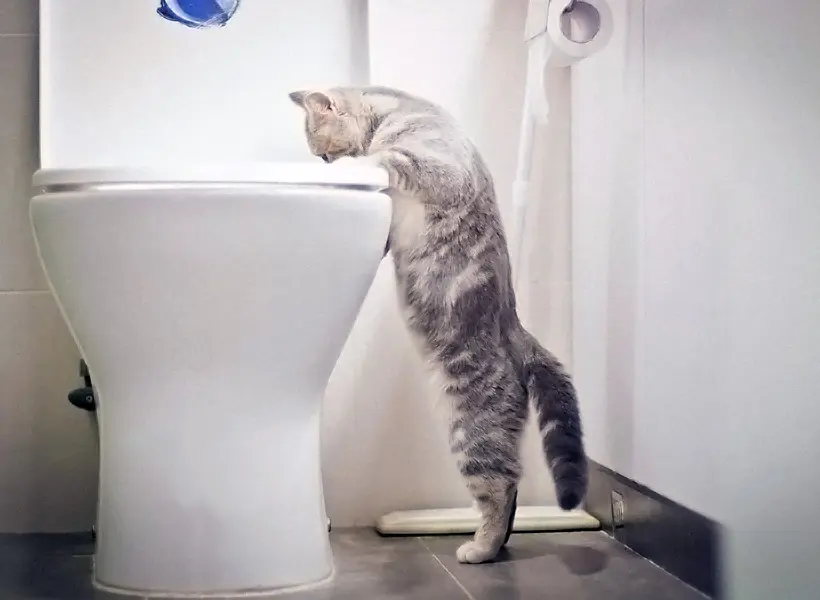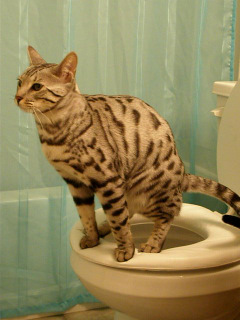Never Flush Cat Poop Down Your Toilet - Safeguard Your Pipes System
Never Flush Cat Poop Down Your Toilet - Safeguard Your Pipes System
Blog Article
Just about everyone seems to have his or her own idea in relation to How to Dispose of Cat Poop and Litter Without Plastic Bags.

Introduction
As pet cat proprietors, it's essential to bear in mind how we deal with our feline close friends' waste. While it might appear practical to flush feline poop down the toilet, this method can have damaging repercussions for both the atmosphere and human health and wellness.
Ecological Impact
Flushing pet cat poop presents hazardous microorganisms and parasites into the water, positioning a significant danger to water communities. These impurities can negatively influence aquatic life and compromise water high quality.
Wellness Risks
In addition to environmental worries, flushing cat waste can also present wellness threats to human beings. Pet cat feces might have Toxoplasma gondii, a parasite that can create toxoplasmosis-- a possibly severe ailment, specifically for pregnant ladies and individuals with damaged immune systems.
Alternatives to Flushing
Fortunately, there are more secure and more responsible means to deal with pet cat poop. Consider the complying with choices:
1. Scoop and Dispose in Trash
One of the most common technique of disposing of pet cat poop is to scoop it right into an eco-friendly bag and toss it in the garbage. Make certain to make use of a committed litter scoop and deal with the waste quickly.
2. Usage Biodegradable Litter
Go with naturally degradable feline trash made from materials such as corn or wheat. These clutters are environmentally friendly and can be securely thrown away in the garbage.
3. Hide in the Yard
If you have a lawn, take into consideration burying feline waste in a marked area far from veggie yards and water sources. Be sure to dig deep enough to stop contamination of groundwater.
4. Install a Pet Waste Disposal System
Purchase a pet dog waste disposal system particularly created for cat waste. These systems use enzymes to break down the waste, minimizing smell and environmental influence.
Verdict
Responsible family pet ownership expands beyond offering food and sanctuary-- it also includes appropriate waste monitoring. By avoiding purging pet cat poop down the toilet and opting for alternate disposal techniques, we can reduce our environmental footprint and safeguard human health and wellness.
Why Can’t I Flush Cat Poop?
It Spreads a Parasite
Cats are frequently infected with a parasite called toxoplasma gondii. The parasite causes an infection called toxoplasmosis. It is usually harmless to cats. The parasite only uses cat poop as a host for its eggs. Otherwise, the cat’s immune system usually keeps the infection at low enough levels to maintain its own health. But it does not stop the develop of eggs. These eggs are tiny and surprisingly tough. They may survive for a year before they begin to grow. But that’s the problem.
Our wastewater system is not designed to deal with toxoplasmosis eggs. Instead, most eggs will flush from your toilet into sewers and wastewater management plants. After the sewage is treated for many other harmful things in it, it is typically released into local rivers, lakes, or oceans. Here, the toxoplasmosis eggs can find new hosts, including starfish, crabs, otters, and many other wildlife. For many, this is a significant risk to their health. Toxoplasmosis can also end up infecting water sources that are important for agriculture, which means our deer, pigs, and sheep can get infected too.
Is There Risk to Humans?
There can be a risk to human life from flushing cat poop down the toilet. If you do so, the parasites from your cat’s poop can end up in shellfish, game animals, or livestock. If this meat is then served raw or undercooked, the people who eat it can get sick.
In fact, according to the CDC, 40 million people in the United States are infected with toxoplasma gondii. They get it from exposure to infected seafood, or from some kind of cat poop contamination, like drinking from a stream that is contaminated or touching anything that has come into contact with cat poop. That includes just cleaning a cat litter box.
Most people who get infected with these parasites will not develop any symptoms. However, for pregnant women or for those with compromised immune systems, the parasite can cause severe health problems.
How to Handle Cat Poop
The best way to handle cat poop is actually to clean the box more often. The eggs that the parasite sheds will not become active until one to five days after the cat poops. That means that if you clean daily, you’re much less likely to come into direct contact with infectious eggs.
That said, always dispose of cat poop in the garbage and not down the toilet. Wash your hands before and after you clean the litter box, and bring the bag of poop right outside to your garbage bins.
https://trenchlesssolutionsusa.com/why-cant-i-flush-cat-poop/

As a fervent reader about Can You Flush Cat Poo or Litter Down the Toilet?, I figured sharing that article was a good idea. Liked our blog entry? Please share it. Help somebody else discover it. We value reading our article about Don’t flush cat feces down the toilet.
Schedule Free Estimate Report this page